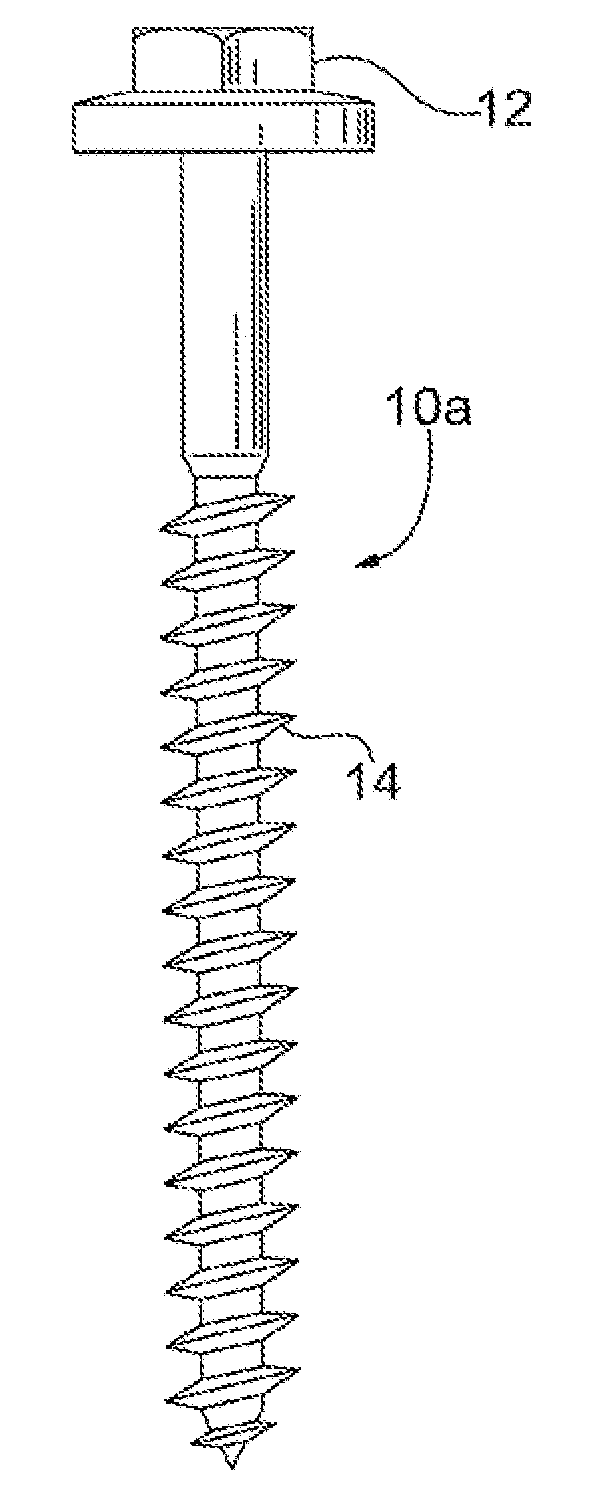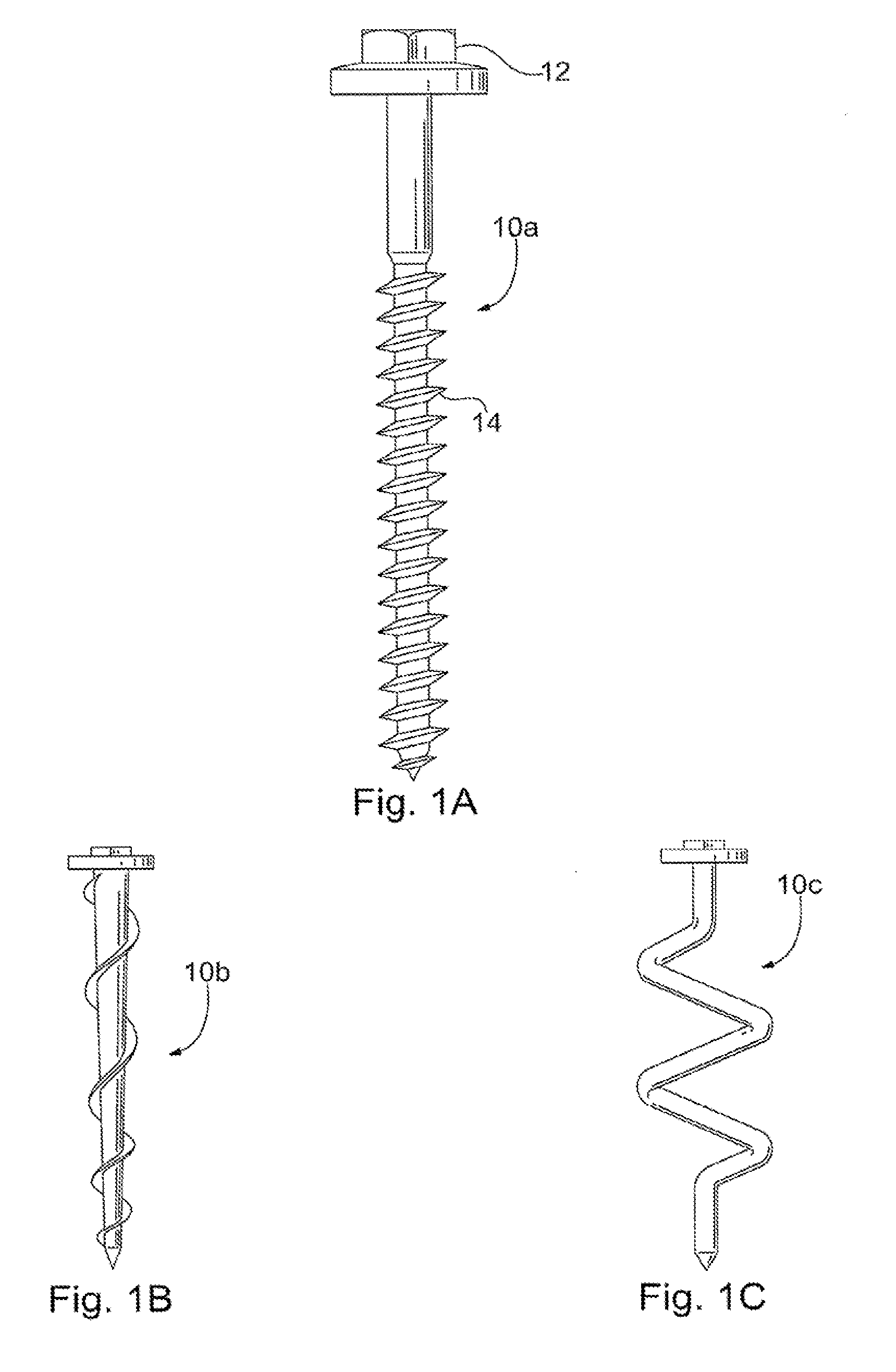Ceramic lag bolt and use thereof in high temperature insulation installation
a technology of lag bolts and lag bolts, which is applied in the direction of threaded fasteners, furnaces, lighting and heating apparatus, etc., can solve the problems of limiting the maximum temperature of the system, the type and type of pins are usually detelinined by the overall cost associated with a particular furnace implementation, and the use of more costly insulating materials and anchoring systems to withstand extreme temperatures, so as to achieve time-saving and cost-effective maintenance of the interior of the furna
- Summary
- Abstract
- Description
- Claims
- Application Information
AI Technical Summary
Benefits of technology
Problems solved by technology
Method used
Image
Examples
Embodiment Construction
[0028]The present invention will now be described with reference to the accompanying figures. It is to be understood that the specific system and applications illustrated in the attached figures and described in the following specification are simply exemplary embodiments of the present invention. Hence, specific dimensions and other physical characteristics related to the embodiments disclosed herein are not to be considered as limiting.
[0029]FIG. 1a depicts an anchor, embodied as a ceramic lag bolt 10a. In a desirable embodiment, the ceramic lag bolt 10a includes a drive head 12 and a shank 14. In one embodiment, the ceramic lag bolt 10a may be 8″ to 10″ in length. The ceramic material is such that it can withstand high temperatures within a furnace, kiln, or other high temperature environment. One exemplary ceramic material may be any non-metallic, inorganic, burnt material, however, it is to be understood that other suitable materials may be utilized. The drive head 12 may be of...
PUM
| Property | Measurement | Unit |
|---|---|---|
| temperature | aaaaa | aaaaa |
| density | aaaaa | aaaaa |
| density | aaaaa | aaaaa |
Abstract
Description
Claims
Application Information
 Login to View More
Login to View More - Generate Ideas
- Intellectual Property
- Life Sciences
- Materials
- Tech Scout
- Unparalleled Data Quality
- Higher Quality Content
- 60% Fewer Hallucinations
Browse by: Latest US Patents, China's latest patents, Technical Efficacy Thesaurus, Application Domain, Technology Topic, Popular Technical Reports.
© 2025 PatSnap. All rights reserved.Legal|Privacy policy|Modern Slavery Act Transparency Statement|Sitemap|About US| Contact US: help@patsnap.com



